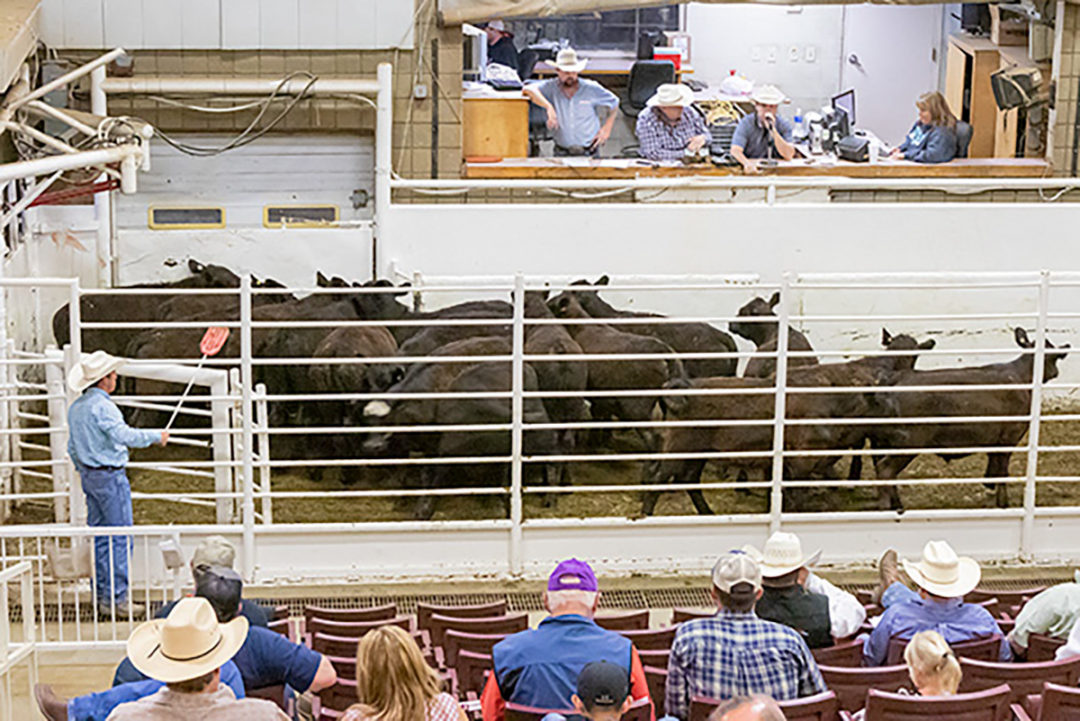In a webinar hosted by NCBA, Elliott Dennis, assistant professor of livestock marketing and risk management at the University of Nebraska – Lincoln, discussed how to top the cattle market by effectively marketing and managing price risk. Essentially, maximizing net profit is what we want to do, Dennis said.
Producers face a lot of risks when it comes to selling on the market. Being able to put certain strategies in your production practices helps limit some of the risk. But you need to know what risk you are trying to manage.
“Sometimes we tend to focus on managing costs,” Dennis said. “But costs can be more predictable than marginal revenue. That’s why it is often best to try to focus on trying to manage marginal revenue to increase profitability than trying to focus our efforts on trying to manage costs more effectively.”
It’s important to remember, maximizing animal performance doesn’t necessarily mean you are going to maximizing net profit. These are four feeder cattle characteristics which add value at the time of sale:
- Genetic characteristics
- Management characteristics
- Marketing characteristics
- Marketing conditions
All of these are proxies for the feedlot to determine:
- If they are healthy and will stay that way
- Will they be able to convert feed efficiently
- Will they grade Choice or higher at production
- Will they have a solid carcass weight
“All of these characteristics give the feedlot some sort of indication if the animal is going to perform in the feedlot and ultimately drive profits for the feedyard,” Dennis said.
However, it is important to remember, these are just proxies and don’t always tell exactly what the animal will do in the feedlot. The industry is seeing movement to using more genetic information to price cattle than these proxies.
There’s an overall consensus in the industry that producers can use to their advantage:
- Hide color matters. Though genetically the cattle may not differ, there still is a premium for black-hided cattle.
- Health needs to be a priority for producers selling to feedlots.
- There are large discounts for non-uniform cattle. To help eliminate this, tighten up your calving window. You could also try putting lots together with neighbors or other producers.
- Value-added programs increase market price received.
Value-added programs
Value-added premiums change over time, just as cattle characteristics change over time. To be successful in and maximize the benefit from a value-added program, you need to match the program to your management strategies.
Producers who market cattle with attributes feedlots want will see economic incentives.
“The reason why packers and feedlots are willing to pay feeder cattle producers to produce cattle with these types of premium attributes is because they receive premiums at the processing plant,” Dennis said.
It all comes down to what consumers want in the end. If they don’t want it in their product, then the attribute isn’t worth anything to packers.
“The most consistent premium year-to-year is going to be one that is connect[ed] to what consumers are willing to pay at retail,” Dennis said. “An example of that is the organic or all-natural programs.”
For all-natural, organic, etc., products, the value added for the processing plant is in the steaks, Dennis said. All the trimmings from these animals are put into vat and combined with conventional products in the end.
Marketing with Livestock Risk Protection
Developing value-added characteristics in your cattle is important, but you need to ensure you can get paid for your investment.
Livestock Risk Protection (LRP) assists in the growing need to offset some of the risk prior to selling cattle in the cash market. This practice is common in the grain market by producers pricing much of the product before it is sold. It is less common for cattle producers.
There are many LRP strategies, but one of the easiest tools to use is calendar pricing. This works by:
- Setting a price floor between 13 to 52 weeks prior to selling cattle in local cash market.
- You can choose a price at or below CME futures price on any day.
- It tends to be cheaper than CME options because the government pays a portion of the premium.
An additional benefit to pricing is: It allows you to sell cattle up to 60 days prior to the contract expiring. This gives you a more flexible marketing window. It is also offered every day.
By using calendar pricing, on average, this increased the average gross return, or price times quantity, by 6.3%, after accounting for premium costs, Dennis said. It also reduced the variation of returns to the cow-calf producers by 10.7%.
Things to remember
Here are a few things to remember:
- Success in the cattle business starts by identifying the problem, then using the right tool to help you fix the problem. There are lots of tools out there, and choosing the correct one is essential.
- “Whether you choose a risk management tool to use to combine with your marketing, you accept some sort of risk and some sort of trade-off,” Dennis said. “That trade-off is generally in terms of what we have on the upside of the price and who’s bearing the risk.”
- In the cash market, you are bearing all the risk, whether prices go up or down.








